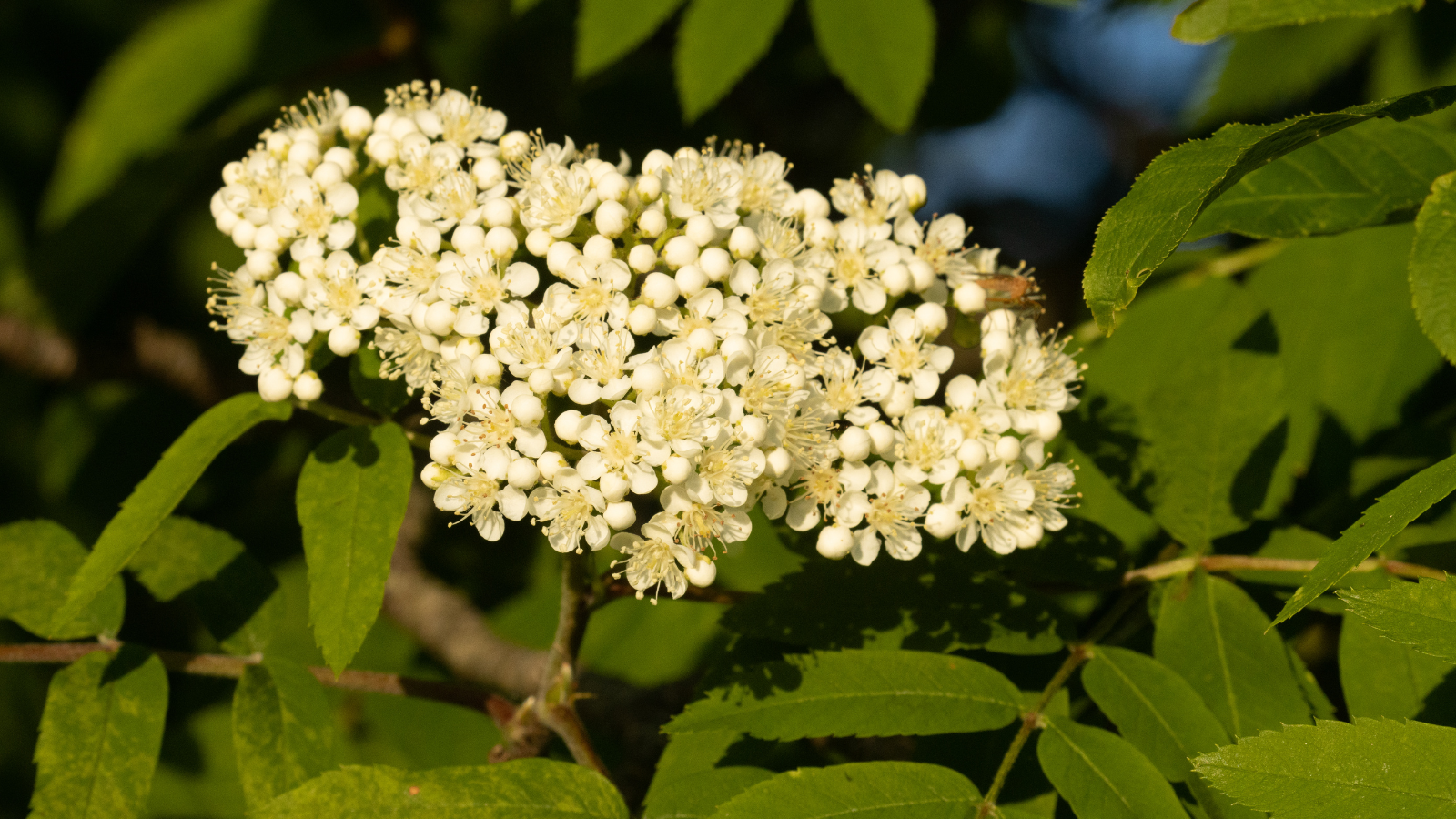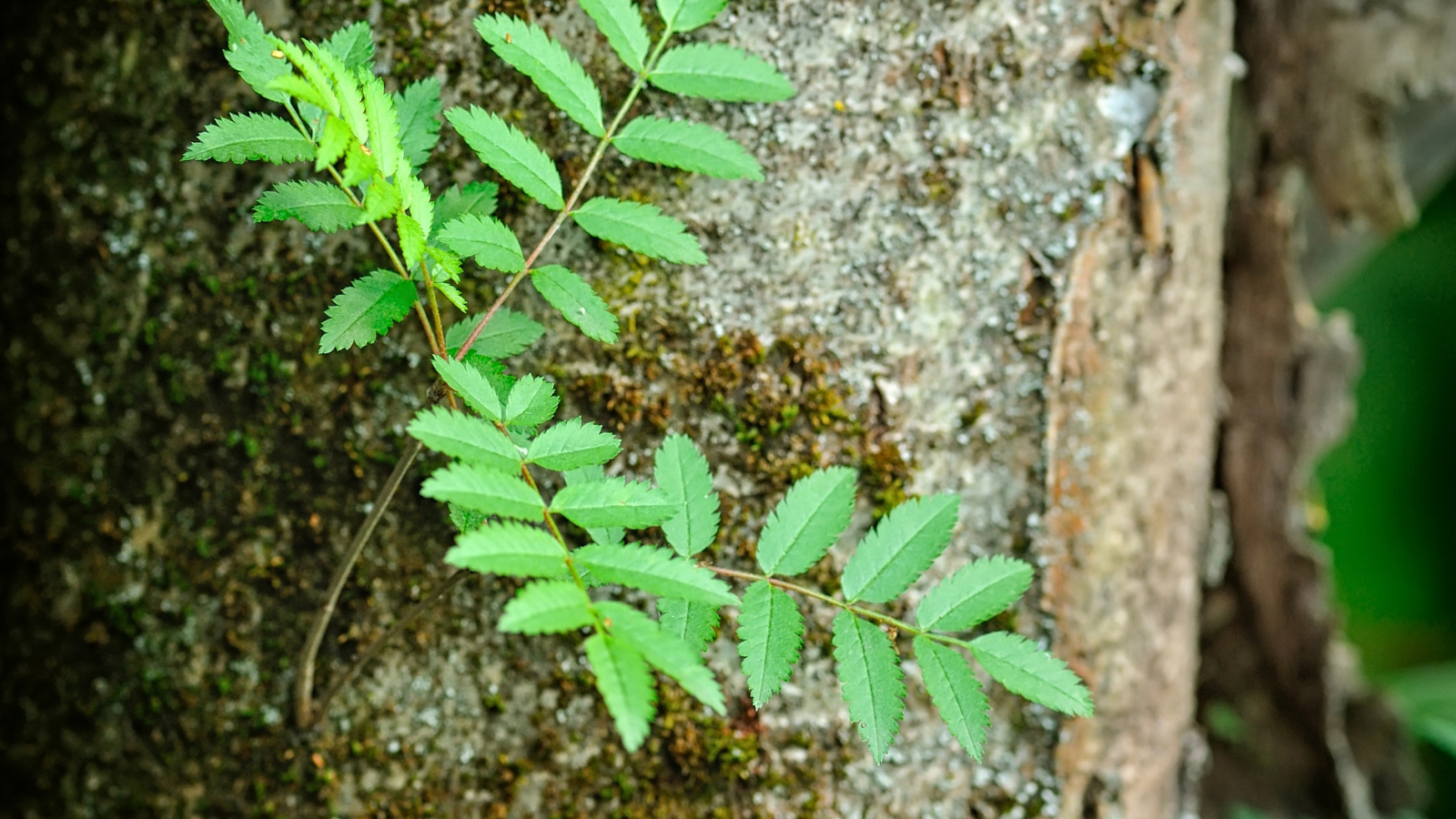Rowan
(Sorbus aucuparia)
This magnificent tree possesses numerous qualities that make it a valuable ally in our efforts to combat climate change and support wildlife and biodiversity. From its enticing berries that sustain hungry birds to its strong wood. This magnificent tree holds the power to transform landscapes and support a thriving ecosystem.
Scientific Name: Sorbus aucuparia
Family: Rosaceae (Rose family)
Average Height: The rowan tree typically reaches an average height of 10-15 metres.
Average Canopy spread: Its canopy often extends to about 5-8 metres.
Preferred Ground Conditions/Habitat: Rowans prefer moist, well-drained soils and are often found in woodlands, hedgerows and upland areas throughout the UK. It is also a common sight in urban parks and gardens due to its beautiful structure, vibrant autumn colour and bright berries that remain on the tree into winter.
How to Identify Rowan
Rowan Leaf ID: The rowan's leaves are pinnate, meaning they consist of several leaflets arranged on either side of a central stem. Each leaflet is ovate in shape, with a serrated margin and a vibrant green colour in spring, turning fiery orange-red in autumn.


Rowan Flower ID: In late spring to early summer, the rowan tree adorns itself with clusters of delicate, creamy-white flowers. These blossoms are small, with five petals typical of the rosacea family, attracting an array of pollinators, including bees and butterflies.
Rowan Fruit ID: One of the most distinctive features of the rowan is its clusters of bright red berries, known as sorbs or rowan berries. These berries mature in late summer and early autumn, providing a vital food source for birds, such as thrushes and blackbirds.


Rowan Bark ID: The bark of the rowan tree is smooth and silver-grey when young, gradually developing shallow fissures and becoming rougher with age. Its textured bark adds character and interest to the tree's overall appearance.
What Native UK Wildlife Does the Rowan Support and How Does It Support Them?
The rowan plays a crucial role in supporting native UK wildlife. Its abundant berries provide nourishment for birds during the winter months when food sources are scarce. Redwings and fieldfares are particularly fond of rowan berries and often rely on them as a vital energy source. In addition, the rowan's dense foliage offers shelter and nesting sites for various bird species, including finches and warblers. These trees also attract insects, providing a valuable food source for birds and other small creatures.
Properties and Uses of Wood/Parts of the Rowan
The rowan tree possesses wood that is strong, durable, and fine-grained, making it suitable for a range of practical applications. Historically, the wood has been used to craft tool handles, walking sticks and furniture. Its bark contains tannins, which have been utilised for dyeing fabrics and treating leather. Additionally, herbalists have harnessed the medicinal properties of rowan, using its berries in traditional remedies for digestive issues and colds. Packed with vitamin C and with a tart fruity flavour typical of the rose family, the berries make a wonderful and native alternative to cranberry sauce when processed into a jelly. This versatile tree truly offers an abundance of resources to both wildlife and humans alike.
Start your tree planting journey today. Join I Dig Trees and be a part of something truly special.
Together, we’re taking positive action - planting millions of trees for climate, wildlife and communities.
